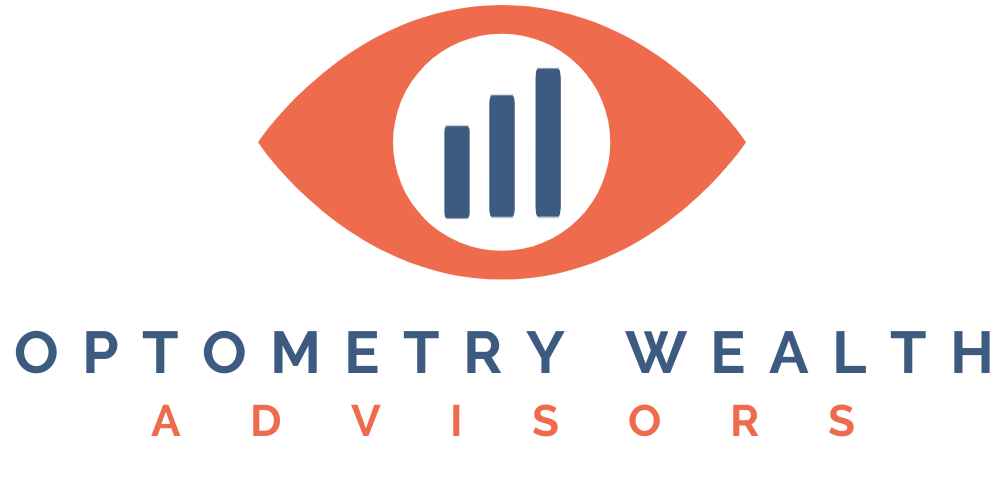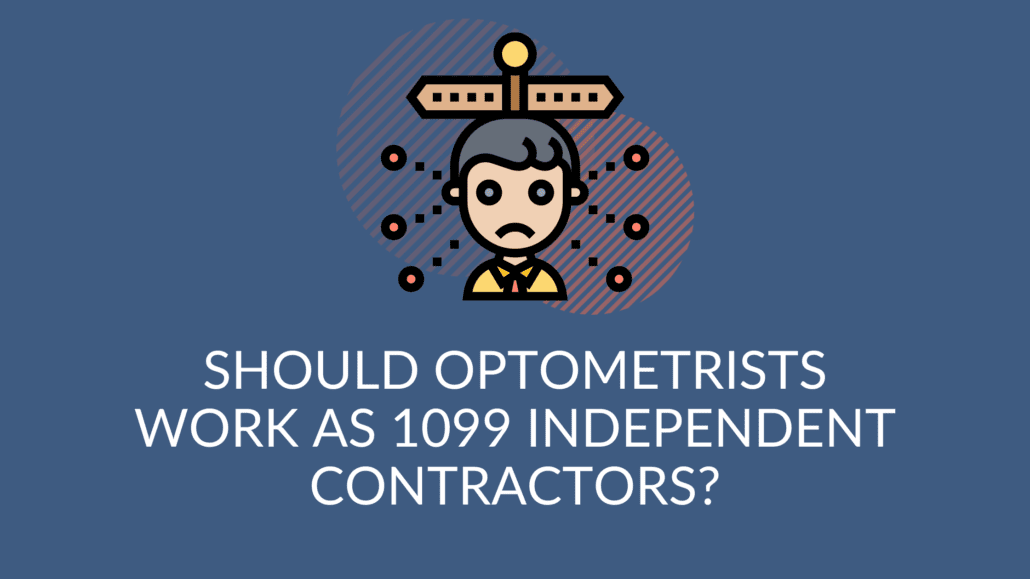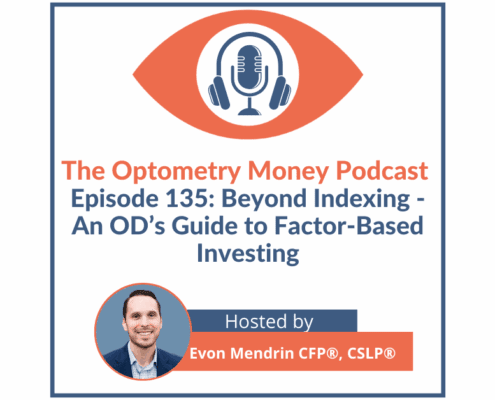The optometry profession has a bright future ahead. There are more career opportunities than ever before – from corporate to private practice, associate to owner, academia to industry. You may face several important career decisions early in your career.
One career decision optometrists may face is whether to work as a W2/traditional employee or as a 1099 independent contractor (IC).
You may have received an offer that gives you the choice between the two, or you intentionally set out to be an IC and work at multiple practices.
Should you work as a 1099 independent contractor or a W2 employee? There are pros and cons to each, ranging from lifestyle flexibility to tax deductions. There are also questions about whether you actually should be classified as an independent contractor or an employee.
The decision is personal, and this article won’t be able to tell you which option is “best”. Think about your own personal goals and preferences. Do you need financial and work stability, or do you crave more flexibility? Is the job a stepping stone to something greater or is this a long-term decision? Do you prefer to be more hands on with your finances or do you prefer certain things handled for you?
Let’s explore some benefits and drawbacks of life as a 1099 IC optometrist and a few financial planning considerations.
What are Benefits of Working as a 1099 Optometrist?
If you are truly an independent contractor (see below for more on this), you should enjoy more flexibility. You should expect the flexibility to design your own schedule and work at multiple practices.
There are more tax planning opportunities for the self-employed contractor. You can decide on business entities. For example, you might choose to be taxed as an S-corp instead of a sole proprietor if it makes sense.
You enjoy business deductions against the income you earn. You can deduct expenses that relate directly to your work, an opportunity you don’t have as a W2 employee.
Licensing and continuing education fees, your lab coat (but not business attire like slacks and dress shirts), commuting costs, or professional liability insurance premiums are all up for consideration as legitimate deductions.
Independent contractors may also benefit from the 20% Qualified Business Income Deduction, assuming your taxable income is within the thresholds.
You are able to deduct health insurance premiums for you, yourself, and your dependents as an “above-the-line” deduction, and deduct half of the self-employment taxes you pay.
You have a broader range of retirement planning options. W2 employees can only use whatever retirement plan the employer has (401k or SIMPLE IRA) and IRAs.
ICs can use self-employed retirement plans, such as individual-401ks or SEP-IRAs. An individual-401k allows you to contribute both as an employee and an employer of your solo business. This gives you a higher total contribution amount if your net income is high enough.
SEP-IRAs are also popular, but allow you to contribute only as the owner. Contributions are limited to ~20% of net income if you’re filing taxes as a sole-proprietor.
You should demand a higher gross rate – either per diem or from production. You’ll see why as I explore the drawbacks below.
What are Drawbacks of Working as a 1099 Optometrist?
There are two major drawbacks for being a 1099 IC optometrist – loss of benefits and taxes.
You won’t be eligible for group benefits from an employer. There are no employer 401k matches (3-4%+), health insurance benefits, professional liability insurance, or paid CEs. It’s possible to recreate your own benefits, but it’s all out of your own pocket.
You’re likely not paying into your state’s unemployment insurance. Though some states allow you to voluntarily pay into it.
You’ll also be fully responsible for handling taxes. W2 employees have taxes deducted from their paychecks, but you’ll get the full paycheck with nothing withheld. You need to plan for quarterly estimated tax payments on time each April, June, September, and January 15th.
It’s easy to get behind on this when you’re used to it all done behind the scenes. At tax time, you could find yourself last year’s tax bill on top of the current year’s quarterly payments. There are ways out of that, but it’s a stressful hole you don’t want to find yourself in.
That’s not all – let me introduce you to self-employment taxes. You pay Social Security tax (12.4% up to $147,000 of income) and Medicare tax (2.9%). As a W2 employee, you pay half of each and your employer pays the other. Independent contractors have to pay the full 15.3% along with income taxes.
You might see extra costs of filing taxes, having to account for separate financials and file a Schedule C along with your 1040 tax return.
Financial Planning Considerations for Working As a 1099 Optometrist
With that quick rundown of some pros and drawbacks to both options, let’s run through a few financial planning considerations.
Can you actually be classified as an independent contractor? The thoughts above assume you are actually independent. You have the flexibility to work at multiple locations and set your schedule.
But, you may be offered the choice of W2 or 1099 with no major differences in the work situation.
I’m definitely not an HR or legal expert. But if this is the case, you should ask whether you can legally be an independent contractor.
This is a matter of law, not a flip that to be switched on and off.
The IRS provides factors to be weighed on whether someone is really an independent contractor or actually an employee:
- Behavioral: Does the company control or have the right to control what the worker does and how the worker does his or her job?
- Financial: Are the business aspects of the worker’s job controlled by the payer? (these include things like how worker is paid, whether expenses are reimbursed, who provides tools/supplies, etc.)
- Type of Relationship: Are there written contracts or employee type benefits (i.e. pension plan, insurance, vacation pay, etc.)? Will the relationship continue and is the work performed a key aspect of the business?
Control, control, control is the theme. If the practice has control over your work and hours, it’s likely you should be an employee.
For a lot of these arrangements, the practice sets the appointments and determines working hours. It’s very possible (likely?) that it’s actually an employee relationship and that the optometrist should be eligible for all the benefits of an employee.
Many states have their own rules as well. California, for example, has recently come down hard on . You saw this with the passing of (and subsequent changes to) AB 5, which tried to broadly reclassify independent contractors as employees.
There’s a long list of potential issues when mis-classifying an employee without a reasonable basis. The IRS, Department of Labor, and state governments all have something to say about this.
This could affect employment taxes, penalties, retirement plans, unemployment insurance, worker’s comp, and more. It’s something both you and your potential employer should know and talk with legal or employment experts if questions come up.
If you receive an offer like that, it could be a bargaining chip. Try to negotiate the freedom and flexibility over your work and schedule that would actually allow you to be an independent contractor.
Ask for higher gross pay as 1099 to compensate for no benefits and SE tax. 1099 ODs need to both recreate their own benefits and cover higher unemployment taxes.
Yes, it is quite possible to start your own retirement plan. You get a deduction for health insurance premiums and half of your self-employment taxes. But you miss out on employee match dollars and health insurance is an expensive benefit to recreate on your own.
Be sure to negotiate a higher per-diem or production rate to account for what you lose for not being an employee.
For example, at an absolute bare minimum, ask for a 7.65% increase on the first $147,000 to account for self-employment taxes.
Have a plan for quarterly estimated tax payments. Plan on paying these each April, June, September, and January 15th.
Two important factors are the amount you pay and timing.
One goal is to avoid a penalty for underpaying. The IRS gives you a safe harbor to know how much to pay to avoid an underpayment penalty:
You may avoid the Underpayment of Estimated Tax by Individuals Penalty if:
- Your filed tax return shows you owe less than $1,000 or
- You paid at least 90% of the tax shown on the return for the taxable year or 100% of the tax shown on the return for the prior year, whichever amount is less.
If your adjusted gross income was over $150,000 last year ($75k for singles), then you’ll have to pay 110% of last year’s tax. Split that amount over 4 quarterly payments.
Follow those safe harbors and pay your quarterly payments on time, and you’ll avoid a penalty. You can also reference the IRS’s Form 1040-ES to help you figure and pay estimated taxes.
Setup a separate bank account for tax dollars. Have a process for moving those dollars out of your main bank account into the tax account. Keep those dollars out of sight, out of mind, as they’re no longer yours. The more you can automate this, the less stress you’ll feel.
Expecting a higher tax bill because of a jump in income? Follow the safe harbors above, and set aside extra funds into your tax account. Keep it saved until you file your taxes. You may even get some interest from a high-yield savings account throughout the year.
Self-employed retirement plans lower the 20% QBI deduction. You currently receive a deduction that’s 20% of “Qualified Business Income.”
If you file taxes as a sole proprietor, your deductible contributions to an individual-401k or a SEP IRA lower “qualified business income” which lowers the deduction.
The effect is that your retirement contributions are not fully deductible. They will be fully taxable when you withdraw them in retirement. For most ODs that have a long time horizon until retirement, it still makes sense to use the retirement plan.
For others – especially much closer to retirement – it may make sense to use a Roth individual-401k instead if it’s available. Personal tax planning and projections become important, especially when making these decisions.
Surround Yourself With Good Counsel. This isn’t meant to be individual tax or financial advice. Do your own due diligence, and seek good counsel where it makes sense. For example, ODs on Finance has a partnership with Dr. Chris Lopez O.D. to provide career counseling and contract reviews. Other considerations that might come up are non-compete or non-solicitation agreements. There are likely other services available, and you can review your offer contract with an attorney to make sure you understand what’s offered and make the right decision for you.
A great professional team in your corner – tax, legal, and financial advisors – Can make a big difference in your life. Lean on them to avoid mistakes and take some of the stress of these career decisions off of your plate.
If you’d like to see more educational articles drop directly do your inbox each week, subscribe below.
Any questions about life as a W2 employee vs an independent contractor? Let’s chat! Schedule a time to talk or email me at evon@optometrywealth.com.



 Optometry Wealth Advisors LLC
Optometry Wealth Advisors LLC Optometry Wealth Advisors LLC
Optometry Wealth Advisors LLC Optometry Wealth Advisors LLC
Optometry Wealth Advisors LLC
